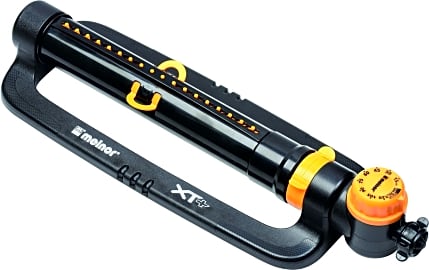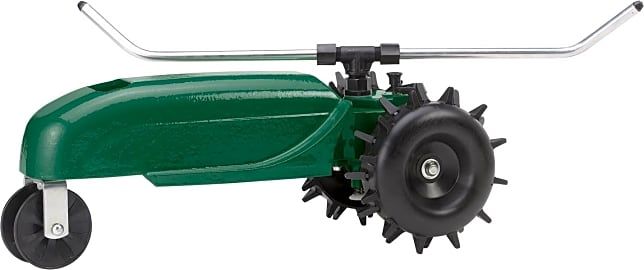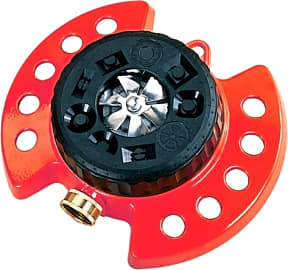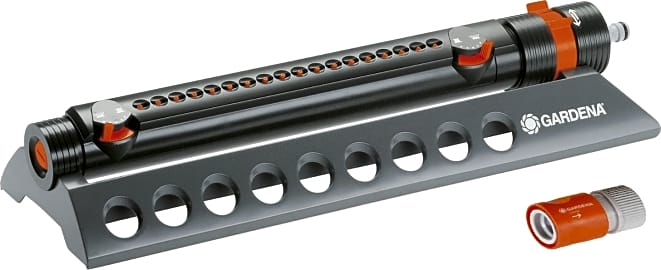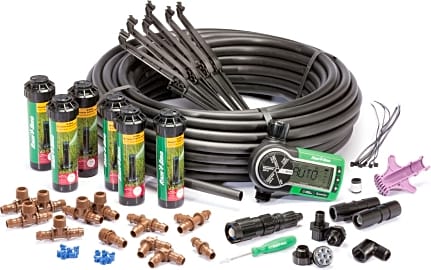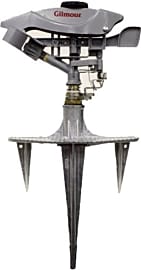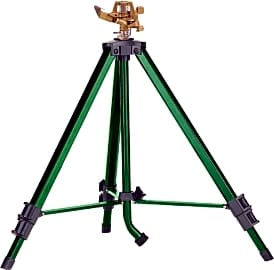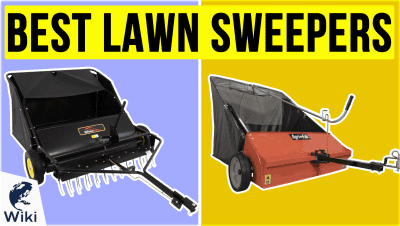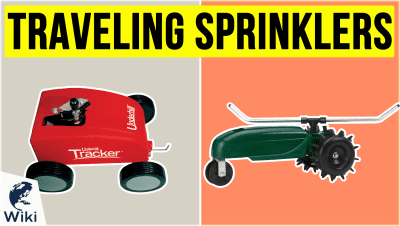The 10 Best Lawn Sprinklers

This wiki has been updated 44 times since it was first published in June of 2015. Spend more time enjoying your lawn and less time watering it when you take advantage of one of these super-convenient sprinklers. They'll keep your garden and flower beds looking beautiful all year round without you having to do as much work. We've included some really affordable options as well as a full-on, in-ground system for those who prefer to go all the way. When users buy our independently chosen editorial picks, we may earn commissions to help fund the Wiki.
Editor's Notes
May 21, 2019:
We replaced the Gilmour Circular with the updated Gilmour Pattern Master, as one of the great things about it is it's adjustability and the newer version has easy to change controls while still covering a huge distance.
In the top two spots, the Gardena Zoom Maxx and the Melnor XT Turbo both provide consistent coverage without leaving any dry spots, but the Gardena is going to offer you better customization options for those awkward-shaped patches of landscaping. Plus you can't beat the convenience of the Gardena's quick change connector.
What Do I Need To Know About A Lawn Sprinkler Before I Buy?
Chances are a customer has lived with a specific sprinkler for a while.
The first thing you need to consider before purchasing a lawn sprinkler is the surface that you'll need that sprinkler to cover. Keep in mind that a lot of sprinklers are portable, which means that if a sprinkler doesn't cover the range you need, you can always move it from one spot to another.
The next thing you want to consider is how much irrigation you actually need a lawn sprinkler to provide. As a general rule, the more control a person has over the sprinkler's output, the better. With that in mind, check to see if any model that you're interested in will allow you to adjust the water's pressure. Also check to see if the sprinkler can run on a timer, or whether it will (eventually) shut off by itself. In the end what you're trying to avoid is wasting money and water. What you're also trying to avoid is doing damage to your grass.
Beyond that, you'll want to confirm that any worthwhile sprinkler can fit the nozzle on your hose (This will require knowing the diameter of your hose, as well). The majority of sprinklers are adjustable, and they're designed to fit most garden hoses. In the rare event a sprinkler doesn't fit, all you need to do is buy an inexpensive coupler that you can screw onto your hose.
If you live in an area where a sprinkler will be exposed to the elements, you'll want to be sure and read some customer reviews. Chances are a customer has lived with a specific sprinkler for a while. That being the case, he or she is in a position to explain whether - or why - a specific model might be prone to wear and tear.
Lawn Sprinklers: A Troubleshooting Guide For Beginners
Imagine this, the spigot is on and you've loosened up that knot in the hose. You've tightened the connection between the hose and the sprinkler, and the sprinkler is still not functioning the way that it's supposed to. Don't panic, especially if this is the first time that this has occurred. Before you call in a professional, try a few of the easy fixes that we have listed for you below.
If the hose is functioning properly, then you know that the sprinkler is where the problem resides.
The more advanced your sprinkler, the greater the probability that any problem has to do with the controls. Given that sprinklers sit outside, where they can be tripped over, or rained on, or played with by the dog, any number of dials could be turned off. Either that or an extension cord could be pulled out. Review the settings, and - if applicable - check any batteries that are used with the sprinkler, along with the plug, and any remote control.
The next possibility is a clog. Remove the hose from the sprinkler. If the hose is functioning properly, then you know that the sprinkler is where the problem resides. Clean out any adapters or connecting valves. If you have an air hose, use that - along with a tube brush - to clean out any dirt inside.
If your sprinkler is working, but it isn't completing a full rotation, check for any obstructions down on grass level. Then check the individual holes where the water is released. If you're good with handiwork, check to see if there are any outstanding screws or springs that need to be adjusted. A lot of sprinklers are liable to seize up if any screw inside the turbine becomes too tightly wound.
If you have tried all of these solutions and you've come up empty, it may be time to call a handyman. Either that or check the sprinkler's warranty (or both).
A Brief History Of The Lawn Sprinkler
As homeowners became more prevalent in Europe and America throughout the 19th Century, outdoor lawns became a point of pride. This still rings true today. The issue back then was that certain areas of the lawn weren't irrigated by rain year-round, which meant the surrounding grass inevitably turned brown, espeically during warm seasons.
Smith's invention was compact and efficient, and it was inexpensive to produce.
Enter Joseph Lessler, a Buffalo businessman who filed the first patent for a lawn sprinkler in 1871. Lessler's invention was based on hooking a nozzle and a turbine up to a hose. Lessler's sprinkler had a tremendous range of up to 600 ft., but it was also large and static, which made it less than ideal for multi-acre lawns.
A Washington man named Joseph Smith one-upped Lessler by introducing a rotary sprinkler in 1897. Smith's invention was compact and efficient, and it was inexpensive to produce. For the next several years it became the industry standard for anyone with lawn-care needs.
The industry shifted in 1932, when a California farmer named Orton Englehardt designed the first-ever impact sprinkler. Impact technology (i.e., those metal sprinklers that spit out water in an oscillating cycle) was critical in that it opened up the potential for running an entire network of sprinklers along any farmland or lawn.
Englehardt sold his invention to a married couple named the LaFetras. The LaFetras formed a company known as Rain Bird to manufacture the impact sprinkler. Rain Bird has since gone on to become the largest irrigation-and-plumbing-supply corporation in the world, selling more than 4,000 products in 133 countries around the globe.


